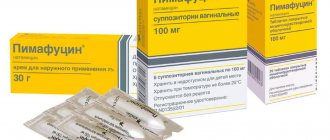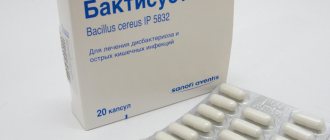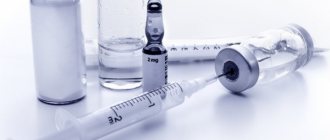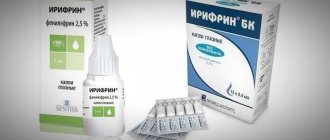Indications for use
The drug Amaryl is prescribed when type 2 diabetes mellitus or so-called non-insulin-dependent diabetes is detected. It is effective in situations where diet and exercise do not produce the desired results. If metabolic control is insufficient, Amaryl may be prescribed in combination with Metformin.
When taken in combination, the effectiveness of drugs increases, on the basis of which the drug Amaryl M was developed. It combines both drugs and is intended for the complex treatment of sugar disease. This medication improves blood circulation in the liver and stimulates the processing of glucose into glycogen, and is not dangerous for diabetes.
Amaryl, tablets 3 mg, 90 pcs.
Pharmacodynamics
An oral hypoglycemic drug is a third generation sulfonylurea derivative.
Glimepiride reduces blood glucose concentrations, mainly by stimulating the release of insulin from pancreatic β-cells. Its effect is primarily associated with improving the ability of pancreatic β-cells to respond to physiological stimulation with glucose. Compared with glibenclamide, low doses of glimepiride cause the release of less insulin while achieving approximately the same reduction in blood glucose concentrations. This fact indicates that glimepiride has extrapancreatic hypoglycemic effects (increased tissue sensitivity to insulin and insulinomimetic effect).
Insulin secretion. Like all other sulfonylureas, glimepiride regulates insulin secretion through interaction with ATP-sensitive potassium channels on β-cell membranes. Unlike other sulfonylurea derivatives, glimepiride selectively binds to a protein with a molecular weight of 65 kilodaltons located in the membranes of pancreatic β-cells. This interaction of glimepiride with its binding protein regulates the opening or closing of ATP-sensitive potassium channels.
Glimepiride closes potassium channels. This causes depolarization of β-cells and leads to the opening of voltage-sensitive calcium channels and the entry of calcium into the cell. As a result, an increase in intracellular calcium concentration activates insulin secretion through exocytosis.
Glimepiride binds and is released from the binding protein much faster and, accordingly, more often than glibenclamide. It is assumed that this property of the high rate of exchange of glimepiride with the protein that binds to it determines its pronounced effect of sensitization of β-cells to glucose and their protection from desensitization and premature exhaustion.
The effect of increasing tissue sensitivity to insulin. Glimepiride enhances the effects of insulin on glucose uptake by peripheral tissues.
Insulinomimetic effect. Glimepiride has effects similar to those of insulin on glucose uptake into peripheral tissues and glucose output from the liver.
Glucose is absorbed by peripheral tissues by transporting it into muscle cells and adipocytes. Glimepiride directly increases the number of glucose transport molecules in the plasma membranes of muscle cells and adipocytes. An increase in the entry of glucose into cells leads to the activation of glycosylphosphatidylinositol-specific phospholipase C. As a result, the intracellular calcium concentration decreases, causing a decrease in the activity of protein kinase A, which in turn leads to stimulation of glucose metabolism.
Glimepiride inhibits the release of glucose from the liver by increasing the concentration of fructose-2,6-bisphosphate, which inhibits gluconeogenesis.
Effect on platelet aggregation. Glimepiride reduces platelet aggregation in vitro and in vivo. This effect appears to be due to selective inhibition of COX, which is responsible for the formation of thromboxane A, an important endogenous platelet aggregation factor. Antiatherogenic effect. Glimepiride helps normalize lipid levels, reduces the level of malonaldehyde in the blood, which leads to a significant reduction in lipid peroxidation. In animals, glimepiride leads to a significant reduction in the formation of atherosclerotic plaques.
Reducing the severity of oxidative stress, which is constantly present in patients with type 2 diabetes. Glimepiride increases the level of endogenous α-tocopherol, the activity of catalase, glutathione peroxidase and superoxide dismutase.
Cardiovascular effects. Sulfonylureas also have effects on the cardiovascular system through ATP-sensitive potassium channels. Compared with traditional sulfonylurea derivatives, glimepiride has a significantly lesser effect on the cardiovascular system, which may be explained by the specific nature of its interaction with the ATP-sensitive potassium channel protein that binds to it.
In healthy volunteers, the minimum effective dose of glimepiride is 0.6 mg. The effect of glimepiride is dose-dependent and reproducible. The physiological response to physical activity (decreased insulin secretion) is preserved when taking glimepiride.
There are no significant differences in the effect depending on whether the drug was taken 30 minutes before meals or immediately before meals. In patients with diabetes mellitus, sufficient metabolic control can be achieved within 24 hours with a single dose of the drug. Moreover, in a clinical study, 12 of 16 patients with renal failure (creatinine clearance 4-79 ml/min) also achieved sufficient metabolic control.
Combination therapy with metformin. In patients with insufficient metabolic control when using the maximum dose of glimepiride, combination therapy with glimepiride and metformin may be initiated. Two studies demonstrated improved metabolic control with combination therapy compared with either drug alone.
Combination therapy with insulin. In patients with insufficient metabolic control while taking maximum doses of glimepiride, concomitant insulin therapy may be initiated. Two studies found that this combination achieved the same improvement in metabolic control as insulin alone. However, combination therapy requires a lower dose of insulin.
Pharmacokinetics
When comparing data obtained with single and multiple (1 time/day) administration of glimepiride, no significant differences in pharmacokinetic parameters were revealed, and their variability between different patients was very low. There is no significant accumulation of the drug.
Suction
With repeated oral administration of the drug at a daily dose of 4 mg, Cmax in the blood serum is achieved in approximately 2.5 hours and is 309 ng/ml. There is a linear relationship between dose and Cmax of glimepiride in plasma, as well as between dose and AUC. When taken orally, the bioavailability of glimepiride is 100%. Food intake does not have a significant effect on absorption, except for a slight slowdown in its rate.
Distribution
Glimepiride is characterized by a very low Vd (about 8.8 l), approximately equal to the Vd of albumin, a high degree of binding to plasma proteins (more than 99%) and low clearance (about 48 ml/min).
Glimepiride is excreted in breast milk and penetrates the placental barrier.
Metabolism
Glimepiride is metabolized in the liver (mainly with the participation of the CYP2C9 isoenzyme) with the formation of 2 metabolites - hydroxylated and carboxylated derivatives, which are found in urine and feces.
Removal
T1/2 at plasma concentrations of the drug in serum corresponding to multiple dosing regimens is approximately 5-8 hours. After taking glimepiride in high doses, T1/2 increases slightly. After a single oral dose, 58% of glimepiride is excreted by the kidneys and 35% through the intestines. Unchanged active substance is not detected in urine.
T1/2 of the hydroxylated and carboxylated metabolites of glimepiride were about 3-5 hours and 5-6 hours, respectively.
Pharmacokinetics in special clinical situations
Pharmacokinetic parameters are similar in patients of different sexes and different age groups.
In patients with impaired renal function (with low creatinine clearance), there is a tendency for the clearance of glimepiride to increase and for its mean serum concentrations to decrease, which is likely due to more rapid elimination of the drug due to its lower protein binding. Thus, in this category of patients there is no additional risk of accumulation of glimepiride.
Release form
The drug is available in the form of flat oval tablets with a scoring line. Amaryl is intended for oral use and is marketed in different dosages. The tablets are packaged in a blister of PVC/aluminum foil, 15 pieces each; the package contains from 2 to 8 blisters.
The color of the tablets depends on the dosage of the medicine:
- Amaryl 1 mg - pink dragee,
- Amaryl 2 mg - green tablets,
- Amaryl 3 mg - yellow pills,
- Amaryl 4 mg is a blue pill.
Side effects of the drug Amaryl
Based on the experience with the use of Amaryl and other sulfonylurea derivatives, it is necessary to take into account the possibility of developing the following side effects of the drug: From the blood and lymphatic system Sometimes: moderate to severe thrombocytopenia, leukopenia, granulocytopenia, agranulocytosis, erythrocytopenia, hemolytic anemia and pancytopenia, which are usually disappear after stopping treatment. Immune disorders Very rare: allergic vasculitis, mild hypersensitivity reactions, which can progress to severe forms with the development of dyspnea, decreased blood pressure, and sometimes shock. Possible cross-allergy with sulfonylureas, sulfonamides or related compounds. Metabolism: Sometimes: hypoglycemic reactions, which mostly occur immediately, can become severe and are not always easy to correct. The occurrence of these reactions depends, as with other types of hypoglycemic therapy, on subjective factors such as dietary habits and dosage. Organ of vision During treatment (especially at the beginning), transient visual impairment may be observed due to changes in blood glucose levels. From the gastrointestinal tract Very rarely: nausea, vomiting, diarrhea, pressure or sensations of fullness in the stomach, abdominal pain, which rarely may require discontinuation of therapy. From the hepatobiliary system Increased levels of liver enzymes may be observed. Very rare: liver dysfunction (eg bile stagnation and jaundice), hepatitis, which may progress to liver failure. Skin and subcutaneous tissue disorders Hypersensitivity reactions - itching, rash and urticaria. Very rare: photosensitivity. Laboratory values Very rare: hyponatremia.
Release form
The drug is available in the form of flat oval tablets with a scoring line. Amaryl is intended for oral use and is marketed in different dosages. The tablets are packaged in a blister of PVC/aluminum foil, 15 pieces each; the package contains from 2 to 8 blisters.
The color of the tablets depends on the dosage of the medicine:
- Amaryl 1 mg - pink dragee,
- Amaryl 2 mg - green tablets,
- Amaryl 3 mg - yellow pills,
- Amaryl 4 mg is a blue pill.
Instructions for use
According to the instructions, the use of the drug Amaryl is permitted only as prescribed by a qualified specialist, who selects the dosage and treatment regimen on an individual basis.
You should take the medicine with extreme caution for the first time, as there is a risk of a sharp decrease in sugar levels, however, some doctors recommend increasing the dosage of the medicine in such cases.
Begin therapy with 1 mg daily, if necessary, the dosage is gradually increased to 4 mg. During therapy, it is necessary to regularly measure the level of sugar in the bloodstream for possible adjustment of the dosage of the medication, in order to avoid the development of hypoglycemia and hyperglycemia.
It is recommended to take the medicine in the morning before or after a meal, without chewing and drinking half a glass of water. In cases of missing a dose, it is prohibited to double the dosage the next time you take the drug.
A reduction in the dosage of the medication is required in the following cases:
- weight loss,
- change in life order (change in diet or physical activity),
- possible development of hypoglycemia and hyperglycemia.
Interaction with other medications
People with diabetes are often diagnosed with other diseases. Patients suffer from high blood pressure, cardiovascular diseases, metabolic disorders, kidney and liver failure. Having a “bouquet” of diseases, they have to take several different medications at the same time.
To prevent the development of cardiovascular diseases, patients are prescribed medications containing aspirin. Although acetylsalicylic acid is capable of displacing glimepiride from protein compounds, its concentration in the blood serum does not decrease. The effect of taking the drug does not decrease, and sometimes even increases.
The effect of Amaryl can be enhanced by simultaneous use of Allopurinol, Insulin, anabolic steroids, coumarin derivatives, Guanethidine, Chloramphenicol, Fenfluramine, Fluoxetine, Pheniramidol, fibric acid derivatives, Pentoxifylline, Miconazole, Azapropazone, Phenylbutazone, quinolones, Probenecid, salicylates, Oxy fenbutazone, sulfinpyrazone, tetracyclines, tritoqualin and sulfonamides.
The effect of treatment with Amaryl may be insufficient due to the simultaneous use of Epinephrine, Acetazolamide, glucocorticosteroids, Glucagon, Diazoxide, barbiturates, saluretics, laxatives, thiazide diuretics, nicotinic acid, Phenytoin, Phenothiazine, Rifampicin, Chlorpromazine, lithium salts, as well as progestogens and estrogens.
The combination of Amaryl with histamine H2 receptor blockers, Reserpine and Clonidine can cause unpredictable results. Your sugar level may go down or up. A similar effect is observed when drinking alcoholic beverages.
special instructions
The effectiveness of the drug can be affected by nervous shocks and frequent stressful situations; when this occurs, a large amount of adrenaline is released into the blood, which will reduce the effect of the medication.
During the use of the drug, it is necessary to completely avoid alcohol. Amaryl should be stored in a dry place, protected from sunlight and out of reach of children.
In order for the treatment to be as effective as possible, it is necessary to lead a correct lifestyle and follow the recommendations of the endocrinologist.
Side effects
Hypoglycemia is possible, which is determined by the following symptoms:
- gagging,
- headache attacks,
- fatigue,
- feelings of hunger,
- insomnia,
- loss of coordination
- depression,
- bradycardia, etc.
Pain in the abdominal area, unstable stools, anxiety, excessive drowsiness, aggressiveness and temporary blurred vision are also possible.
Overdose
Compliance with the dosage of Amaryl is necessary, because exceeding the norm can cause negative consequences. These include the following symptoms:
- urge to vomit,
- pain in the stomach area,
- loss of coordination and lethargy,
- blurred vision,
- tremors and convulsions.
If a slight overdose is detected, taking carbohydrates (sweet tea, a couple of pieces of sugar, glucose) will help, then you should consult a doctor. If necessary, it is possible to lavage the stomach and take activated charcoal.
A significant overdose can cause loss of consciousness and requires immediate hospitalization.
Analogs
Like any medication, Amaryl has substitute analogues, the use of which must be agreed upon with the treating endocrinologist. Most often, patients are prescribed the following analogues:
- Glimepiride is a Russian-made drug. Produced by several pharmacological companies: Kanofarm, Vertex and Pharmstandard. Drug dosage 1 mg, 2 mg, 3 mg, 4 mg. Packs of 30 tablets.
- Diamerid is a Russian-made drug. Produced by the Akrikhin company, in dosages of 1 mg, 2 mg, 3 mg and 4 mg, in a package of 30 tablets.
The cost of these analogues is slightly lower than the cost of Amaryl, but they are selected in accordance with the individual characteristics of the patient’s body. According to reviews from diabetics taking Amaryl, the effectiveness of the drug is noticeably higher than that of its analogues.
If you are intolerant of glimepiride in these medications, the endocrinologist can replace them with other analogues that contain metformin - Avandamet, Metglib, Glimecomb, or based on vilgliptin - Galvus.
Contraindications
- type 1 diabetes mellitus;
- diabetic ketoacidosis,
- diabetic precoma and coma;
- severe liver dysfunction (lack of clinical experience);
- severe renal dysfunction,
- incl.
- Patients,
- those on hemodialysis (lack of clinical experience);
- pregnancy;
- lactation (breastfeeding);
- children's age (lack of clinical experience);
- rare hereditary diseases,
- such as galactose intolerance,
- lactase deficiency or glucose-galactose malabsorption;
- hypersensitivity to the components of the drug;
- hypersensitivity to other sulfonylurea derivatives and sulfonamide drugs (risk of developing hypersensitivity reactions).
The drug should be used with caution in the first weeks of treatment (increased risk of hypoglycemia); if there are risk factors for the development of hypoglycemia (adjustment of the dose of glimepiride or the entire therapy may be required); for intercurrent diseases during treatment or when changing the lifestyle of patients (changing diet and meal times, increasing or decreasing physical activity); with glucose-6-phosphate dehydrogenase deficiency; in cases of impaired absorption of food and drugs from the gastrointestinal tract (intestinal obstruction, intestinal paresis).










